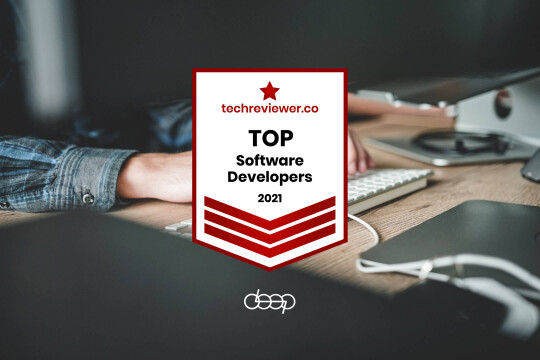Startups seeking funding or entering into partnerships often undergo a rigorous examination of their technical infrastructure and processes known as technical due diligence. This critical evaluation is conducted by potential investors, acquirers, or partners to assess the startup’s technology assets, potential risks, and overall viability. Proper preparation for technical due diligence can significantly enhance a startup’s chances of securing investment or forming successful partnerships.
In this guide, we’ll walk through some essential points to keep in mind when preparing for technical due diligence.
1. Architecture & infrastructure: building on a solid foundation
The bedrock of any successful tech venture lies in its architecture and infrastructure. Start by providing detailed documentation of your system architecture, emphasising key components and illustrating how they interact. Explain the scalability of your infrastructure, reassuring stakeholders that your technology is not only functional but poised for growth.
- Documentation depth: Go beyond basic architectural diagrams. Provide detailed documentation, including data flow charts, dependency diagrams, and infrastructure schematics. This showcases your commitment to transparency and ensures a deeper understanding of your technology.
- Scalability projections: Clearly articulate your scalability projections. Discuss not only how your current architecture accommodates growth but also present a roadmap for future scalability, demonstrating foresight and planning.
- Disaster recovery plans: Address disaster recovery and mitigation strategies. Explain how your architecture is designed to handle and recover from unforeseen events, showcasing your commitment to system reliability.
2. Code & data quality: the backbone of technical excellence
Code quality and data integrity are integral aspects of a startup’s technical prowess. Devote time to comprehensive code reviews, ensuring that coding standards are adhered to and robust testing procedures are in place. Additionally, shed light on your approach to managing and securing data, showcasing your commitment to maintaining the highest standards of quality.
- Automated testing: Highlight the use of automated testing tools and continuous integration practices. This not only ensures code quality but also demonstrates your commitment to a streamlined development process.
- Version control: Emphasise the use of version control systems. This not only ensures code integrity but also facilitates collaboration within your development team, fostering a more efficient and error-resistant workflow.
- Data management best practices: Elaborate on your data management best practices. Discuss data validation, normalisation, and security protocols in place to maintain the integrity and confidentiality of user data.
3. Technologies: staying current and relevant
The choice of technology stack can significantly impact a startup’s trajectory. Investors seek assurance that your technology choices align with industry standards and demonstrate a forward-thinking approach. Outline the rationale behind your current tech stack, discuss any plans for future upgrades, and highlight the competitive advantages it provides.
- Technology roadmap: Provide a clear technology roadmap outlining past and planned updates. This demonstrates a strategic approach to technology adoption and ensures potential investors that your startup is not technologically stagnant.
- Competitive analysis: Conduct a brief competitive analysis highlighting why your chosen technologies provide a competitive advantage. Showcase how your tech stack aligns with industry trends and positions your startup for future success.
- Vendor relationships: If applicable, discuss relationships with key technology vendors. This helps in assessing the stability and support structure for the technologies integral to your product.
4. Scalability: ready for the next level
As investors envision the future, they seek confirmation that your technology is ready to scale seamlessly. Elaborate on your scalability strategies, detailing how your architecture and infrastructure can handle increased user loads, expanded features, and the growing volumes of data that accompany business growth.
- Performance metrics: Showcase key performance metrics that indicate your system’s current and potential scalability. Metrics like response times, concurrent user capacity, and server load under different scenarios provide tangible evidence of your scalability.
- Horizontal vs. vertical scaling: Clearly articulate your approach to scaling – whether through horizontal scaling (adding more machines) or vertical scaling (upgrading existing machines). Explain the rationale behind your chosen strategy.
- Case studies: If applicable, provide case studies or examples of past scalability challenges and how your team successfully addressed them. This not only demonstrates experience but also a proactive approach to problem-solving.
5. People: the human element
Beyond the code, investors are interested in the team behind the innovation. Highlight the expertise and experience of your technical team, showcasing successful projects and key team members. Emphasise your commitment to ongoing skill development, positioning your team as a crucial asset in sustaining and evolving your technological capabilities.
Team bios: Create comprehensive bios for key technical team members. Highlight their expertise, relevant experience, and contributions to past projects. This builds credibility and reassures stakeholders of your team’s capability.
Tech leadership expertise: Let’s shine a spotlight on the tech leaders in your team! Showcase the experience and achievements of key leaders, their ability to make strategic technical decisions, guide the team through challenges, and contribute to the overall success of the company. Describe real-life examples of how their leadership turned challenging technical projects into success stories.
Ability to grow: Emphasise the scalability of your team. Discuss strategies and experiences related to team growth, including successful onboarding processes and the adaptability of your team structure to accommodate increased workloads. Highlight instances where your team has effectively scaled to meet the demands of growing projects or user bases.
6. Workflow: streamlining operations for efficiency
Efficient workflows are indicative of operational excellence. Provide insights into how your team collaborates, your project management methodologies, and the tools you use to streamline processes. A well-defined workflow not only enhances transparency but also demonstrates a mature and organised development environment.
- Agile methodologies: If applicable, discuss the use of agile methodologies in your development processes. This not only signals adaptability but also transparency in project management.
- Project tracking tools: Showcase the tools used for project tracking and management. Whether it’s Jira, Trello, or another platform, this provides a glimpse into your project management approach and efficiency.
- Feedback loops: Explain how feedback loops are integrated into your workflow. This could include regular retrospectives, code reviews, and user feedback mechanisms. Demonstrating a culture of continuous improvement adds to your startup’s appeal.
7. Security: fortifying your digital fortress
In an era of increasing cyber threats, security is non-negotiable. Articulate your security measures, from encryption protocols to access controls. Offer details on how sensitive user data is handled and highlight any certifications or compliance standards your startup adheres to. This not only instills confidence but also assures stakeholders that you take data protection seriously.
- Regular audits: Highlight the frequency of security audits and assessments. Regular audits demonstrate a proactive stance towards security and instill confidence in stakeholders about the robustness of your security measures.
- Incident response plans: Clearly outline incident response plans. This includes steps taken in the event of a security breach, communication protocols, and measures to prevent future occurrences. A well-defined plan mitigates concerns about potential security vulnerabilities.
- Employee training: Showcase employee training programs focused on cybersecurity awareness. A well-informed team is your first line of defense against cyber threats.
8. Intellectual property: protecting your innovations
Investors are keen to understand the measures in place to protect your intellectual property. Clearly document patents, trademarks, copyrights, and any other IP assets your startup possesses. Address potential legal concerns and demonstrate a commitment to safeguarding your innovations, showcasing them as valuable assets integral to your competitive edge.
- Comprehensive IP inventory: Provide a detailed inventory of your intellectual property, encompassing patents, trademarks, copyrights, and any proprietary algorithms or methodologies. Ensure to include a Software Bill of Materials (SBOM), a comprehensive list of software components used in your products. An SBOM not only enhances transparency but also helps in assessing and managing potential security and licensing risks associated with third-party software.
- Licensing agreements: If relevant, discuss any licensing agreements in place. Clearly outline how your startup navigates intellectual property rights, ensuring potential investors understand the legal landscape surrounding your innovations.
- Freedom-to-Operate analysis: Conduct a Freedom-to-Operate (FTO) analysis. This involves ensuring that your products or technologies do not infringe on existing patents or intellectual property rights, minimising legal risks.
Conclusion
In conclusion, thorough preparation for technical due diligence is crucial for startups seeking investment or partnerships. By proactively addressing architecture, workflows, people, scalability, and security startups can position themselves for success during the tech due diligence process. Ultimately, a well-prepared and transparent approach not only accelerates tech due diligence but also builds trust and confidence with potential investors or partners, fostering positive and fruitful relationships.
However, investing effort solely for the sake of meeting tech due diligence requirements might not be the most effective strategy. Instead, establishing robust processes, solid architecture, and a strategic development approach right from the outset is crucial. This proactive approach not only ensures you navigate technical due diligence successfully but also sets a foundation for sustained excellence throughout your startup journey.







